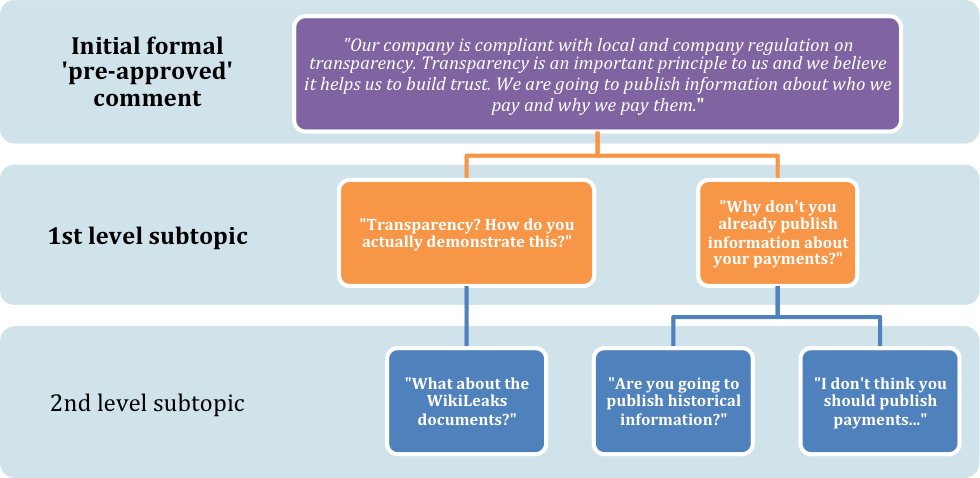In this article, the fourth in a series of ‘how-to’ guides for the pharmaceutical industry, Paul Grant looks at pre-approving content for use in a social media engagement strategy.
Previously we looked at engagement in social media, particularly thinking about each channel’s unique audience needs or content contribution characteristics.
For some pharmaceutical companies, there is an iterative process along the way to achieving truly agile content approval, even if a lot of effort has been expended in scenario planning.
A balance can be found between the compliance requirements of your regulatory department/s, and that savvy new breed of ‘online’ audience that expects interactive and fluid engagement in social media – even from a pharmaceutical company.
Pre-approving content for publication is a long-established process within the industry for ensuring messages and communication are compliant with legislative or company-specific protocols.
Preparation of preapproved content
Even so, it is all too often the case that a piece of pre-approved content has some unexpected ramifications. Seemingly innocent and genuine text, when seen in an online context, can take on a completely unintended meaning. No doubt you can think of a time where an email that you sent has been misconstrued – usually because the very human aspects of accompanying body language and non-verbal communication are missing.
Seemingly innocent and genuine text, when seen in an online context, can take on a completely unintended meaning.
I have personally seen numerous occasions where such instances have had an unfortunate impact on corporate reputation for a company. If you and your company are invested in developing and approving a content strategy, no one wants to find that it backfires due to a technicality.
Therefore, pre-approved content should always be scrutinised for potential opportunities where participants might derail an online conversation through a misunderstanding or even malicious intent.
So let us continue by examining just a few of the avoidable ways this can happen, including:
- Logic loops
- Topic branches
- Diversionary statements
1. Logic loops
This occurs where a company-approved response or post has some logic within it, which can be challenged.
For example, a simple suggestion within a conversation or online community that participants can use another channel to connect with the company (i.e. a ‘Talk to us’ button, or a telephone line, or a website contact form) may be something that is challenged by the participants if not handled well.
They may ask: “Why can’t you just answer the question?” In their perspective, there is no logical reason as to why they would move away from the channel they are actively using.
This is exacerbated if the company is already declared present and engaged in the conversation at that point in time. The audience will expect a response at the time and place where a challenge or question was posited. If there is no obvious reason why a response cannot be given, this can serve to incite or at the very least ‘ruffle the feathers’ of those who have chosen to engage with the company.
Often the company does have other more appropriate channels for handling different kinds of conversation – say adverse event reports, or product complaints, or requests for information – these company channels should be clearly introduced in the conversation whenever there is a need to direct a topic to one of those channels. Ideally, if there is an intention to fall back on these channels, it is a good idea to make them known early on in the engagement and to establish a common understanding when the company may need to defer something to such channels – and of course, why.
These outside channels would really only be suggested as a last resort.
When in a conversation, it is always best to make an attempt at addressing any query or statement – in just the same way as a company representative might attempt to when in a press briefing or television interview.
With this in mind, the only way to be adequately prepared for such eventualities is to thoroughly prepare for the engagement and try to understand the expectations and concerns that the audience may have. One tactic is to ensure that any person tasked with managing a social media channel has sufficient training and authority to represent the company… in the same way that a press office is empowered to speak with journalists, or a medical information department is empowered to speak with healthcare professionals and the general public.
2. Topic branches
A topic branch is a situation where a response has further sub-topics, which can be challenged.
For example, when a preapproved response introduces a new concept to the conversation in passing, this topic can quickly become the focus of interest.
Let us imagine that a company responded in a conversation with a statement such as “our company is committed to transparency so…” this may easily lead to further questions from the audience: “How do you demonstrate this commitment to transparency?” or “How do you define transparency?” etc.
When assessing preapproved statements and responses, a good practice is to develop at least one additional level of depth (ideally two levels) of responses to address sub-topics. [See Figure 1]
Figure 1 – Subtopics can also be challenging when introduced following an initially pre-approved response
3. Diversionary statements
Diversionary statements are useful for explaining why it may not be possible to answer a question either on the spot or through online conversation in general.Wherever it is not possible to provide a comprehensive answer in the context of a question or challenge, it is important to provide a reason which has sound rationale.
It is not acceptable to use a diversionary statement that is not relevant to the question, or appears to be an excuse rather than the ‘true’ reason
An example response which is likely to cause further dissent may include telling the participants that “…we can’t talk about that today because we have limited time” or another such response which may be easily and intuitively identified as an excuse.
In the next article within this series, we will continue looking at pre-approved content and start to think about the concept of ‘tone of voice’ and what that may inadvertently say about the company.


